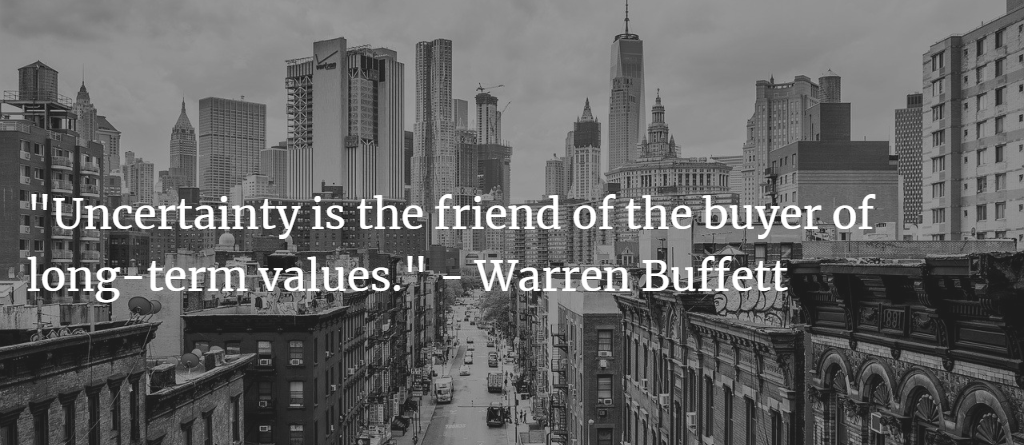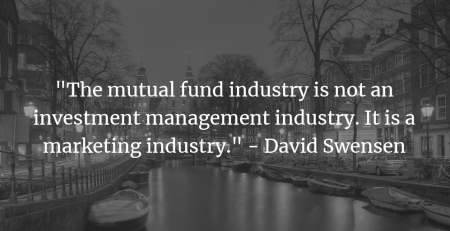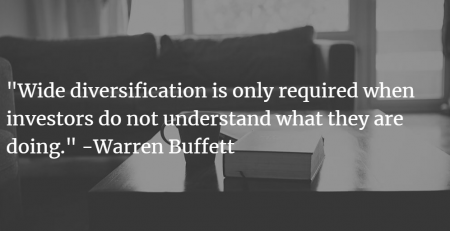Thoughts on Risk: How to Invest with Uncertainty
So far, the year 2020 has been characterized by volatile swings in share prices as the market comes to terms with the uncertainty surrounding Covid-19, social unrest, and the continuing US/ China trade war. Since its peak in mid-February, the S&P 500 has crashed by 35% and subsequently rallied by almost 50%.
Throughout these huge market movements, we remained consistent in our messaging:
- February 4th (near market top): It remains frighteningly obvious that we cannot rely on the market’ to provide us with reliable or accurate information about what a company is worth- we need to establish that on our own.” – Efficient Market Hypothesis: Tesla Edition
- March 24th (near market bottom): “During times of panic, it is this sort of in-depth company knowledge that enables us to take advantage of any irrational price swings created as index vehicles are sold down in tandem.” – Market Update: Why Active Management Excels in Times of Crisis
- May 8th (after aggressive rally): The only way to truly invest prudently and with a margin of safety is to do the hard work of actually understanding each individual stock and whether or not it is a good value today. – The Economy has Largely Stopped: Why is the S&P 500 Only Down 10%?
How were we able to remain calm and disciplined as stock prices moved 10%+ per day? Surely, as volatility has increased, markets have become riskier, right? Answering these questions requires that we take a step back and discuss a concept fundamental to all investing: Risk.
Investment Theory View: Risk and Return
Investment theory teaches us that there is a tradeoff between risk and return – for an investor to increase their return, they must be willing to increase their risk. But what is risk? As an industry, finance has mostly settled on one definition: risk is volatility.
Risk itself is an inherently subjective concept, so one of the key attractions of using volatility as the measure is that it is a known and quantifiable metric. The ability to ascribe a hard number to risk has resulted in the creation of hundreds of risk models, portfolio management tools, and financial theories that all rest on this concept. Indeed, it underpins the vast majority of modern portfolio theory and therefore the way thousands of market participants manage portfolios. Concepts such as – Beta, Value at Risk (VAR), portfolio optimization, etc. lie at the heart of many firm’s approaches to investing.
But unfortunately, this also all happens to be nonsense. Volatility is not a measure of risk at all. After all, what is ‘volatility’? Volatility is simply the standard deviation of historic stock price returns. The reasons this does not represent risk are obvious when we think about them:
- Volatility is backwards looking – it relies purely on past price movements and assumes those will continue into the future.
- Volatility assumes a ‘normal’ distribution of returns (as part of the standard deviation calculation). But stock returns are not normally distributed. Instead, they typically move up slowly and steadily, and crash downwards fast and hard. Applying a normal distribution will overstate the rises and understate the falls (see 2008).
- Volatility paints a mathematically misleading picture of risk:
- If a stock falls by 5% every day it will have volatility of zero, and therefore be rated as zero risk, despite losing around a quarter of its value in a week.
- If a stock moves from $20 to $80 steadily it has low risk. If it then suddenly drops from $80 to $50 it will then be classified as “high” risk. Think about this logically- if you buy the same asset for $50, you have assumed less risk than if you bought it at $80.
- Volatility leads investors around the globe to make absolutely the wrong decisions at absolutely the wrong times. When stocks are expensive after a long upward run, risk models will say stocks are low risk and investors should hold more of them- leading people to buy more of expensive stocks- creating bubbles. When stock prices crash, volatility models will force investors to sell more and more stocks, as they become ‘riskier’ and ‘riskier’. This is the exact opposite of what we as investors should be doing- we should be buying cheap assets and selling expensive ones. Volatility leads you to do the opposite.
It is worth taking a second to think about this last point in the context of recent history- as equity markets bottomed in March, standard portfolio management risk controls led many investors and portfolio managers to sell equities, as they were then deemed ‘riskier’. This then meant thousands of investors locked in losses at the absolute lows and then only began investing again once markets had already rallied.
The GCI View: Less Risk, More Return
Rather than relying on flawed risk metrics simply because they make a complex task appear easier, we take a fundamental approach to managing risk. Our approach recognizes that risk is the possibility of permanent loss of capital. Unlike volatility, this is not a clean and easily calculatable metric, however, it is far more useful in practice.
The most important element of this approach is a fundamental acceptance that for long term investors (and all investors should be long term investors), price is not value– a concept we have referenced a number of times in our writing. The distinction that a company’s quoted stock price does not represent the underlying real intrinsic value of the business is the most important element to controlling risk.
Volatility is solely concerned with price; it has no regard for value. We must always remember that just because a company’s stock has moved 20% in a week, does not mean the underlying value of the company has moved 20%.
Instead, our risk approach focusses on that real intrinsic value. As such, the real risk that we face is the risk of permanent value impairment for the businesses that we invest in. These impairments could be due to competition, market disruptions, industry shifts, consumer shifts, etc. But note the common theme- these are all risks to the business itself- not risks simply to the price of the stock.
Once we have made this distinction between price and value, something wonderful happens: volatility shifts from being a risk to being an opportunity. This shift results in some truly amazing side effects:
- There is no reason to panic during market selloffs. Instead, we can rationally assess whether we think underlying business values have changed or not.
- If the underlying value remains intact, yet stock prices have fallen, we are actually getting more reward for less risk.
- This shift leads us to make the right decisions at the right times: by focusing on value and not price we are naturally led to selling stocks when they are expensive and buying more of them when they are cheap. This sounds incredibly obvious- but it is the exact opposite of a volatility-based approach.
Risk Control in Practice
It is this approach that enabled us to stay so calm when share prices were catering in March- actually buying more of some stocks that sold off most aggressively. Such a logical approach to price and value is the most reliable and consistent way to ensure that investors can make the right decisions at the right times. The ability to do this does not rest on any intellectual brilliance or ability to time markets, rather it rests on a disciplined approach to valuing businesses themselves and viewing market volatility as only an opportunity to make money. In summary, for us, risk control is all about knowing what we own, and what it is worth. We maintain that such an approach remains the best and most repeatable strategy to achieve long-run, risk-adjusted returns, regardless of market conditions.
Disclosures: This website is for informational purposes only and does not constitute an offer to provide advisory or other services by Globescan in any jurisdiction in which such offer would be unlawful under the securities laws of such jurisdiction. The information contained on this website should not be construed as financial or investment advice on any subject matter and statements contained herein are the opinions of Globescan and are not to be construed as guarantees, warranties or predictions of future events, portfolio allocations, portfolio results, investment returns, or other outcomes. Viewers of this website should not assume that all recommendations will be profitable, or that future investment and/or portfolio performance will be profitable or favorable. Globescan expressly disclaims all liability in respect to actions taken based on any or all of the information on this website.
There are links to third-party websites on the internet contained in this website. We provide these links because we believe these websites contain information that might be useful, interesting and or helpful to your professional activities. Globescan has no affiliation or agreement with any linked website. The fact that we provide links to these websites does not mean that we endorse the owner or operator of the respective website or any products or services offered through these sites. We cannot and do not review or endorse or approve the information in these websites, nor does Globescan warrant that a linked site will be free of computer viruses or other harmful code that can impact your computer or other web-access devices. The linked sites are not under the control of Globescan, and we are not responsible for the contents of any linked site or any link contained in a linked site. By using this web site to search for or link to another site, you agree and understand that such use is at your own risk.






